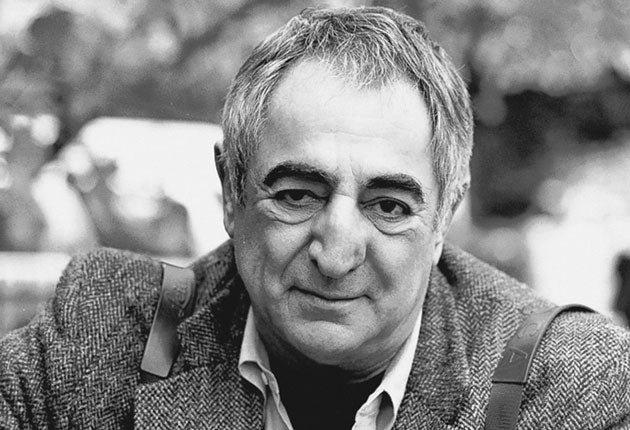Jim Marshall: Rock photographer who took classic shots of Jimi Hendrix, Janis Joplin and The Beatles

There are good photographers and there are great photographers; Jim Marshall was one of the latter, an inspirational photojournalist. When he took his Leica to San Francisco's Candlestick Park on 29 August 1966 for another sold-out concert by The Beatles, few – certainly not him – knew the group was kissing goodbye to screams and touring. Marshall repeatedly froze history, sometimes dramatically, as when Hendrix set fire to his guitar at the 1967 Monterey Pop Festival. More often he caught the living ginger of his subjects' personalities.
"Whenever anyone asks me how I got the photographs that I did, why I was often the only photographer present or got such unique access, I reply simply, 'trust'." Whether photographing the Stones or the Red Hot Chili Peppers, Hendrix or Joan Baez, Miles Davis and Steve McQueen or Neil Young, Led Zeppelin or Elizabeth Cotten, Dylan or Moby Grape, Limp Bizkit or Allen Ginsberg, he gained his subjects' trust. There were moments of extraordinary candour, like the images of Janis Joplin that captured the singer's exhilaration and slump backstage. Marshall failed to number his reels, so he could never give the context or chronology.
Born in Chicago in 1936, but raised in San Francisco from 1938, Jim Marshall – it was only ever Jim or Jimmy – was well placed when the music scene exploded in the Bay Area in the 1960s. One of the most intuitive and respected photographers to specialise in musician portraiture and the concert shot, he was a prince among photojournalists. In his San Francisco Rock: the Illustrated History of San Francisco Rock Music (1988), Jack McDonough toasts Marshall's "unnerving ability to capture the most powerful and penetrating images through the lens."
The Bay Area music scene was visually inclined. Highly. Its colour-saturated concert posters, with their swirling calligraphy and giddily juxtaposed supporting imagery were renowned. Concurrently, Marshall, Herb Greene and Baron Wolman in particular were preserving what was happening in monochrome. Marshall snapped concert-goers queuing outside The Matrix in 1965, shot images that adorned Jefferson Airplane's After Bathing at Baxter's (1967) and their Dadaesque cover portraiture for Volunteers (1969) and got Johnny Cash mugging and brandishing his middle finger at San Quentin prison. When people thought Joplin, then with Big Brother and the Holding Company, and the Airplane's Grace Slick would be competitive, he brought them together for marvellous double portraits in black-and-white and colour.
Marshall's career took off in 1959 through meeting John Coltrane. The saxophonist needed a lift to an interview with the San Francisco Chronicle music critic Ralph J Gleason in Berkeley. Marshall offered a ride for the chance to take pictures. It was an early example of establishing a bond. "Without trust between the subject and myself I couldn't have worked the way I did and still do. I have to have total access, be allowed where I want, when I want and do my thing the way I do."
One aspect of his career that makes him very dear to journalists was his dogged insistence that his work was his. Attempted rights grabs are ever more commonplace. He fought that slithering monster early on, declaring, "If they don't trust me, with my body of work, fuck it, use someone else."
He was painstaking in selecting which images to put before the public, a process revealed in Proof (2004) where the final chosen "hero shot" was placed side-by-side with the contact sheet it came from. His work has since been voluminously collected from the ones that got away. His legacy of blues, country, folk, jazz and rock photojournalism is documented in Monterey Pop (1992) with Joel Selvin, Not Fade Away: The Rock & Roll Photography of Jim Marshall (1997), Jazz (2005) with Phil Elwood, Early Dylan (2005) with pictures by Barry Feinstein, Arlo Guthrie, Daniel Kramer and Marshall, Tomorrow Never Knows: The Beatles Last Concert (2006) with writer Eric Lefcowitz, Trust: Photographs of Jim Marshall (2009) and Match Prints (2010) with Timothy White.
He died in his sleep in his New York hotel, on tour promoting Match Prints. Although Marshall never had any children, he quipped that his work was his legacy: "I have no kids. My photographs are my children."
Ken Hunt
Jim Marshall, photojournalist: born Chicago 3 February 1936; married; died New York City 24 March 2010.
Subscribe to Independent Premium to bookmark this article
Want to bookmark your favourite articles and stories to read or reference later? Start your Independent Premium subscription today.

Join our commenting forum
Join thought-provoking conversations, follow other Independent readers and see their replies